Overview
Spartakus is an upcoming alternate history modification for the popular strategy game Hearts of Iron IV. It is set in a universe where multiple post-Great War communist revolutions in Europe succeed, most notably in Germany.
The Great War was a time of death and suffering, but also set the right conditions for what philosophers such as Karl Marx could've only dreamed of: World Revolution. Within only five years, two of the worlds major powers had been swept up in the red revolutionary tide.
Now, the world stands deeply divided along ideological lines. The British Empire, seeing themselves a "bulwark" against the revolution, have expended much of their interwar resources on preventing additional revolutions across the globe. However, in 1929, the already struggling post-war economy had enough. In the infamous London Market Crash, whatever was left of the prosperity of Britain has withered away. Now, its Empire is threatened with collapse as its allies continue to distance themselves. In Burma, disgruntled socialists and nationalists have risen up in a full scale revolt against the crown, and it seems likely that British rule in India will face great troubles in the coming years.
In the Soviet Union, the party continues to struggle after the sudden death of Vladimir Lenin in 1927. Divided among various internal cliques, revolutionary politician Lev Kamenev has taken the reigns of the Soviet Union for the moment. How long his shaky reign over the party will last is up for question, but nonetheless an end to this power struggle is necessary for the Soviet Union to ever recover from the Russian Civil War.
In Germany, the destruction of both the Great War and the Civil War is still quite visible. The Rhineland remains occupied under a French collaborationist regime, and Baden-Württemberg is under the local restored monarchies. Red Germany, or the FSRD, continues to dedicated most of its resources towards building Germany back to its former glory under the reign of revolutionary leader Rosa Luxemburg. This extended plan, however, has generated much discontent among the various represented groups, including the "Bolshevik" faction within the KPD, as well as the anarcho-syndicalist FAUD and the democratic socialist USPD.
It is now New Years Day, 1932. With communist and socialist regimes rooted in the Soviet Union, Germany, Hungary, Slovakia, Poland and Mongolia, it is becoming quite clear that Marx was correct to say:
"A spectre is haunting Europe — the spectre of communism."
Brief Lore
With the Russian Revolution in 1917 ending Russian involvement in the Great War, a red tide across Europe seemed inevitable. Under the guidance of revolutionary Vladimir Lenin, the Red Army clashed with the opposing White Army in what would become known as the Russian Civil War. This started a wave of revolutions from Germany, to Hungary, to Italy, to Persia, to Spain, to Portugal and beyond.
In 1918, a battered German Empire signed an armistice with the Entente following the intervention of the United States in the previous year. With this, their fate was sealed. On the 9th of November, Emperor Wilhelm II abdicated, and the Weimar Republic was declared. This was not, however, the end. In the February 1919 elections, the Communist Party of Germany (KPD) emerged with nearly 20% of the vote. On May 1st 1919, a bloody year long Civil War would erupt, with the communists initially on the losing side.
However, 1920 brought new hope, for the Red Army had emerged victorious in the war with Poland. With the Russian Civil War coming to a close, the Red Army swept into Germany, turning the tide rapidly. The unprepared western allies, economically battered with a war weary population, were unable to intervene until the very last moment, upon which a treaty was the only option. On the 19th of November, the final remnants of the "White Army" in Germany were defeated at the banks of the Rhine, and victory was declared by the KPD.
Germany would now be known as the Free Socialist Republic of Germany.
Why start in 1932?
The reason 1932 was chosen was to give a relatively long "prelude" time of roughly four years, where most of the events that will shape the eventual meat of the game occur. This means that Civil War's will occur, power struggles will ensue, coups and revolutions will topple governments and colonies will rebel. Each and every event will ultimately shape the politics of every nation on the map one way or another. The goal is to include content lasting until at least 1945-1950, and the AI will be modified accordingly so it does not throw out mass amounts of divisions and slow down the game before the actual conflicts break out. With that said, you should not be expecting the major conflicts to take until 1939 to break out, as many will break out much earlier.
What systems will it use?
Since Spartakus is heavily inspired by narrative driven modifications such as Kaiserreich, it will host similar government systems, such as the Darkest Hour style cabinet. However, we also have unique additions such as Victoria 2-esque laws, party coalitions and unique GUI's. Spartakus will also extensively use the new decisions system to add on to the national focus system in order to make it more interesting during peace time.
Developer Applications
Applications for developers are currently open and to apply you must only fill out this short form: Goo.gl
Resources
If you bothered to read that all, thanks! I appreciate it. There is plenty more to check out related to the mod, however. Please look at some of the links below to find some extra information and to talk with the devs:
Welcome to the fifth progress report for Spartakus! It has admittedly been a while, but be assured that the mod is still in active development. The topic of this progress report is not exactly the most conventional, but it is nonetheless an important part of the mod.
Overview
Although Spartakus is foremost an alternative history mod, it is also a total conversion mod. There are a multitude of gameplay mechanics that have been tweaked or entirely overhauled, for the purposes of making gameplay that fits the vision of the mod. Part of that has involved reworking the resource and production system to better model the so-called “resource war” that historically existed during both world wars and would also exist in the Spartakus world war.
In the vanilla game there are six resources: oil, aluminium, rubber, tungsten, steel and chromium. In Spartakus, these have been reworked into seven resources: oil, bauxite, rubber, copper, iron, rare metals and coal. Production requirements have, of course, been changed to account for this.
Resources:

(please note that the UI shown here and elsewhere is not final and will fit the general wood and paper style by release)
Something important in this resource rework is the fact that Spartakus starts in the year 1932. As a result, there are many cases where production did not yet exist or was significantly lower than in later years. For example, oil production in Bahrain did not begin until June 1932. On the other hand, there has not yet been a global economic depression in this timeline, which was historically responsible for drastically reducing production of resources such as coal and iron. This has all been taken into account when distributing resources.
Additionally, there have been some changes to resource-based buildings. Synthetic Refineries have been changed into Synthetic Resource Factories, and Fuel Silos have been changed into Fuel Refineries. This is covered later on in the PR.
At the end of each section is a table showing the percentage distribution of each resource by country, for visualization purposes. It may help to give you an idea of how the “resource war” would impact each power bloc. All countries with 1% or more of global output are displayed, while the rest are in the “Other” section.
Oil
Oil constitutes one of the resources that hasn’t been completely reworked. With that said, its distribution has been changed. In the vanilla game the representation of oil is abstracted in an unrealistic fashion. For example, the island of Curaçao produces oil units in vanilla, when in reality it did not have any deposits of its own and instead had numerous refineries, which refined oil sourced from Venezuela. In Spartakus, all oil units represent physical petroleum deposits. Oil is, of course, a very important strategic resource. A lack of oil was infamously a major problem for the German war machine in World War II. In Spartakus, both military blocs have their own unique dynamics with oil.
For the socialist bloc of INPROV, or the International Proletarian Defence Pact, the Soviet Union bears the responsibility of providing oil, as oil is scarcely available among other faction members. Fueling the INPROV war machine will prove a difficult task, and the USSR will have to look towards exploring new deposits to keep up with the demand. Promising are newly discovered but untapped deposits in Bashkiria. In the event of war, the dominant oil deposits in the Caucasus, particularly in Baku, will need to be held at all costs. Simultaneously, INPROV will need to prepare to secure oil deposits that supply the enemy. In particular, Romania and Persia are important viable targets.
Soviet oil:
The anti-communist bloc, led by the British Empire, France and Japan, will likewise need to pay close attention to its oil supplies. Britain holds in its possession the rich Persian oil deposits, located chiefly within the closely-aligned breakaway state of Khuzestan. This source is not only threatened by INPROV, but also by local strife in Persia. Mexican oil, dominated by British, Dutch and American corporations, will also need to be guarded as the Mexican government increasingly aspires to nationalize its resources. Also important will be the developing oil deposits in Kurdistan around Kirkuk, as well as in Bahrain and the eastern coast of the Arabian Peninsula. These sources, however, will meet only a fraction of the demand of the bloc, which means additional oil will need to be imported from the United States, Venezuela, Romania, the Dutch East Indies and other countries.
Persian oil:
Of course, one cannot go without mentioning the bastion of oil production: the United States. Oil production is based in the states of Texas, California and Oklahoma, but oil is found all across the country and will only continue to grow as untapped deposits in the south are discovered.
American oil:
Also included in these figures is shale oil, which mainly comes from Scotland, Estonia and Manchuria. Only a small amount of in-game oil units are sourced from this, but it is still worth mentioning.
Bauxite
Bauxite serves as the replacement for aluminium, largely serving the same purposes. With that said, units of bauxite always represent mined ore in Spartakus. In vanilla, by contrast, aluminium loosely represents aluminium production, which requires bauxite to produce. As of 1932, aluminium is still a developing resource, gradually increasing in importance as its military and civilian uses expand. Overall global output is relatively low, no longer fueled by the demands of Great War military aviation. This situation will rapidly change as military aviation develops and new sources are exploited to meet the demand.
Bauxite is one of the resources available in abundance in the anti-communist bloc, but scarcely available in the INPROV bloc. France has a virtual monopoly on bauxite production. These deposits, based in Southern France, are a significant target for INPROV in their inevitable quest to defeat France.
French bauxite:
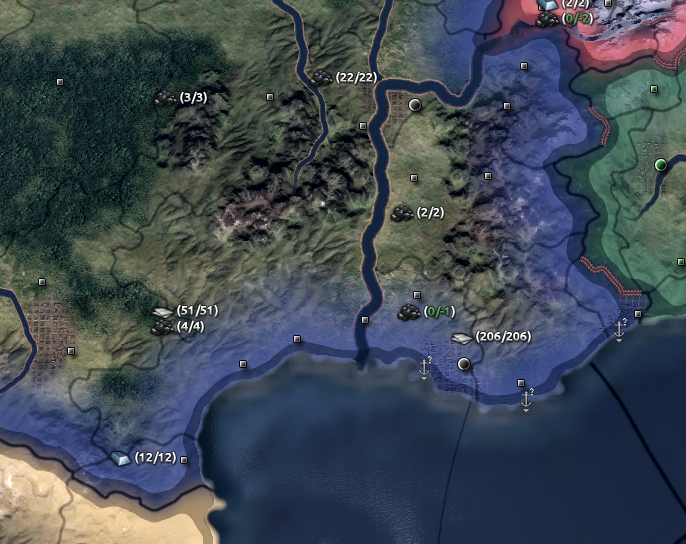
Behind France is the United States, which has yet to exploit its full potential. Currently available deposits are almost exclusively in Arkansas.
American bauxite:
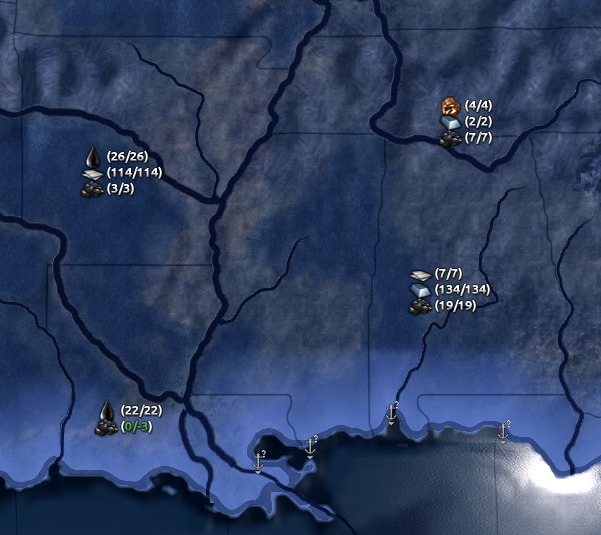
For INPROV, the demand for bauxite is placed upon the shoulders of Hungary and the USSR. Germany, the paramount industrial and military power, has almost no bauxite within its borders. Fortunately for them, neither Hungary nor the USSR have reached their full potential. Nonetheless, as demand increases with the modernization of military aviation, it is doubtful that Hungary and the USSR could completely fill the needs of INPROV. The previously mentioned target of French bauxite remains paramount, but various other sources can be secured depending on how the situation in the world goes. A socialist Italy would help to meet the demand, as would a socialist Yugoslavia controlling the bauxite of Bosnia, Montenegro and Croatia.
Italian and Yugoslav bauxite:
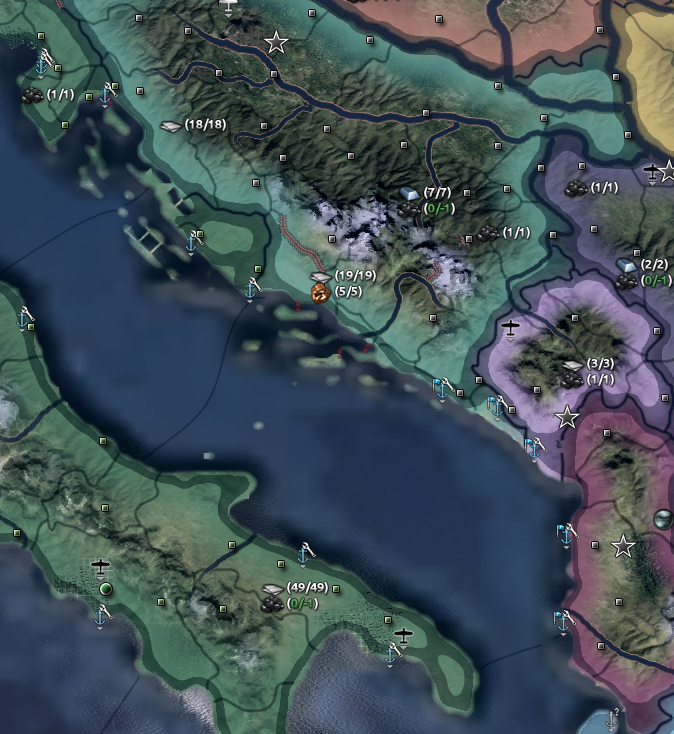
Hungarian bauxite:
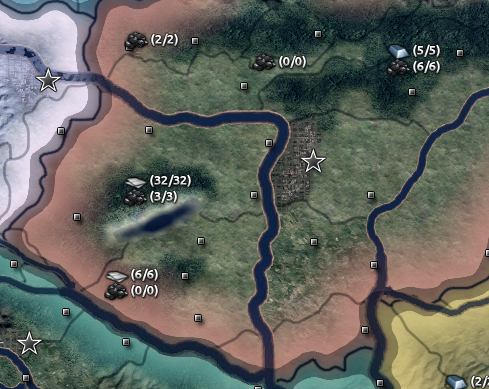
Soviet bauxite (+3 in Azerbaijan):
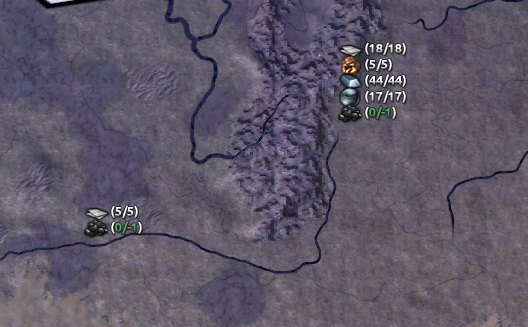
Rubber
Rubber is, alongside oil, one of the resources that hasn’t been changed very much. With that said, research was done to realistically allocate resource units.
Rubber is perhaps the most scarce resource for INPROV. Rubber production is dominated by the colonial powers and their plantation colonies in East Asia. The Netherlands, as part of its policy of neutrality, exports rubber from the Dutch East Indies to the socialist states. This pragmatic arrangement is naturally costly and counter to the autarkic goals of the socialist states, and compromises their anti-imperialist message. However, an alternative is being rapidly developed: synthetic rubber. Historically the USSR was a pioneer of synthetic rubber, with a synthetic plant being established in July 1932 using potatoes as the primary ingredient, while Germany was the first to establish a large-scale synthetic rubber industry. In Spartakus, the state of isolation for INPROV has driven such projects to the forefront. The importance of rubber in aviation and vehicle production naturally makes it a resource difficult to go without.
On the topic of distribution, British Malaya produces a majority of the world's rubber in 1932, seconded distantly by the Dutch East Indies. Britain overall maintains a monopoly on rubber production.
British Malayan rubber:
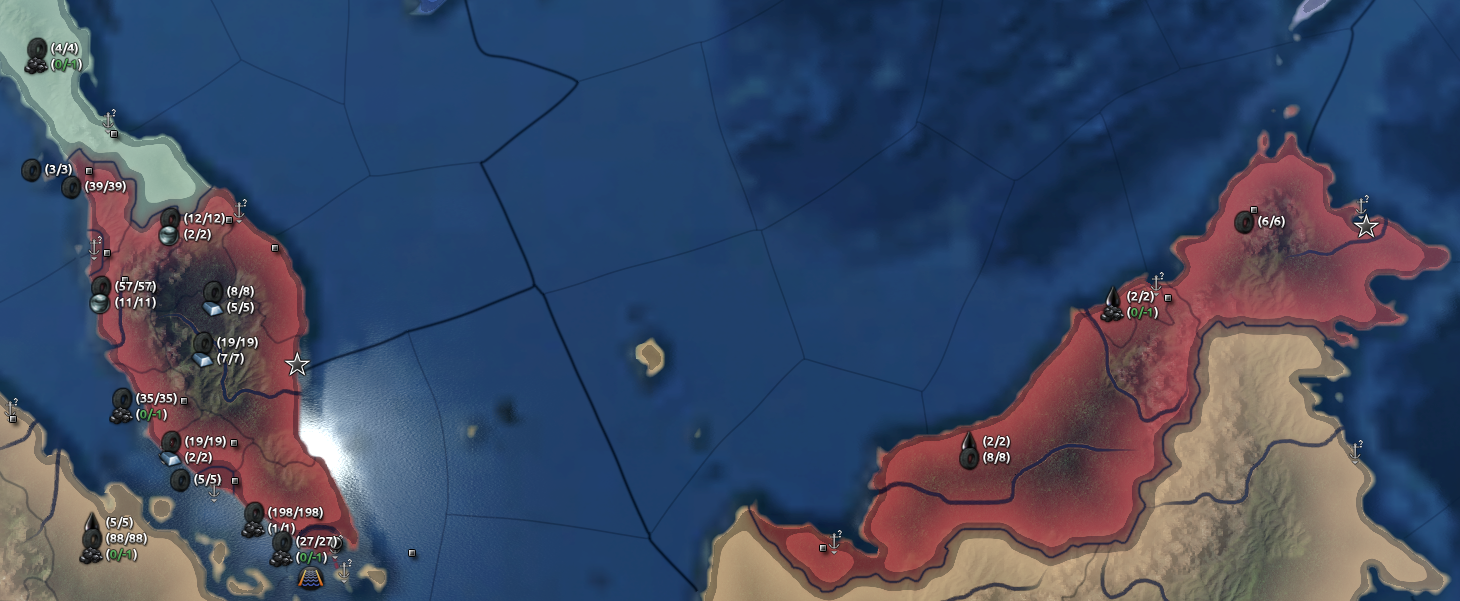
Dutch East Indies rubber:
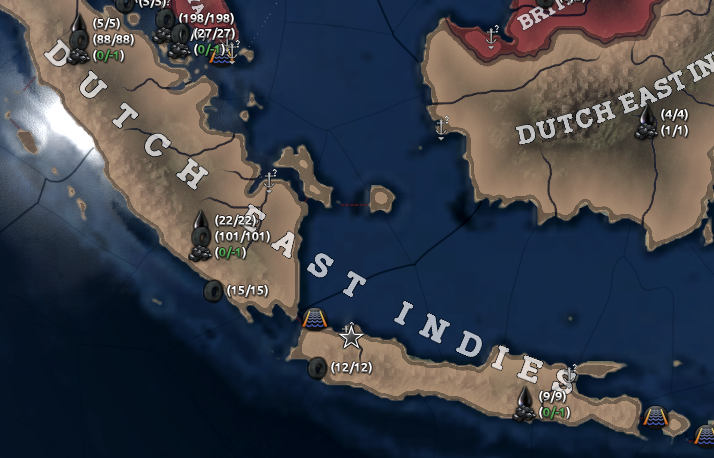
Copper
Copper is one of the “new” resources added in the rework. Copper was historically a very important resource in World War II, being used in the production of brass, munitions, and wiring for radios and motors.
Copper is another resource that is scarce for INPROV, but like with bauxite changes in the world situation can alleviate this shortage. Also lucky for INPROV is the fact that the USSR in 1932 has not even nearly achieved its maximum potential, with historical output in 1942 being 5x that of 1932. Even in such a situation it is doubtful that the USSR could meet the eventual demands of the INPROV war machine alone. The possible expansion of INPROV into Spain, the Balkans and Chile would do much to aid the situation.
On the other hand, for the anti-communist bloc, copper is readily available for import. Britain in particular has a fair amount of copper at its disposal from Canada and Northern Rhodesia. For the French, no copper is available from their own lands nor the colonies, but strong trade relations with Belgium offset this problem. Importantly, the anti-communist bloc will need to rely on imports from overseas, which poses an issue in the face of inevitable attempts by INPROV to disrupt maritime trade.
In 1932 copper production is dominated by the United States and Chile, with the “copperbelt” of Katanga and Northern Rhodesia trailing behind.
American-Canadian-Mexican copper:
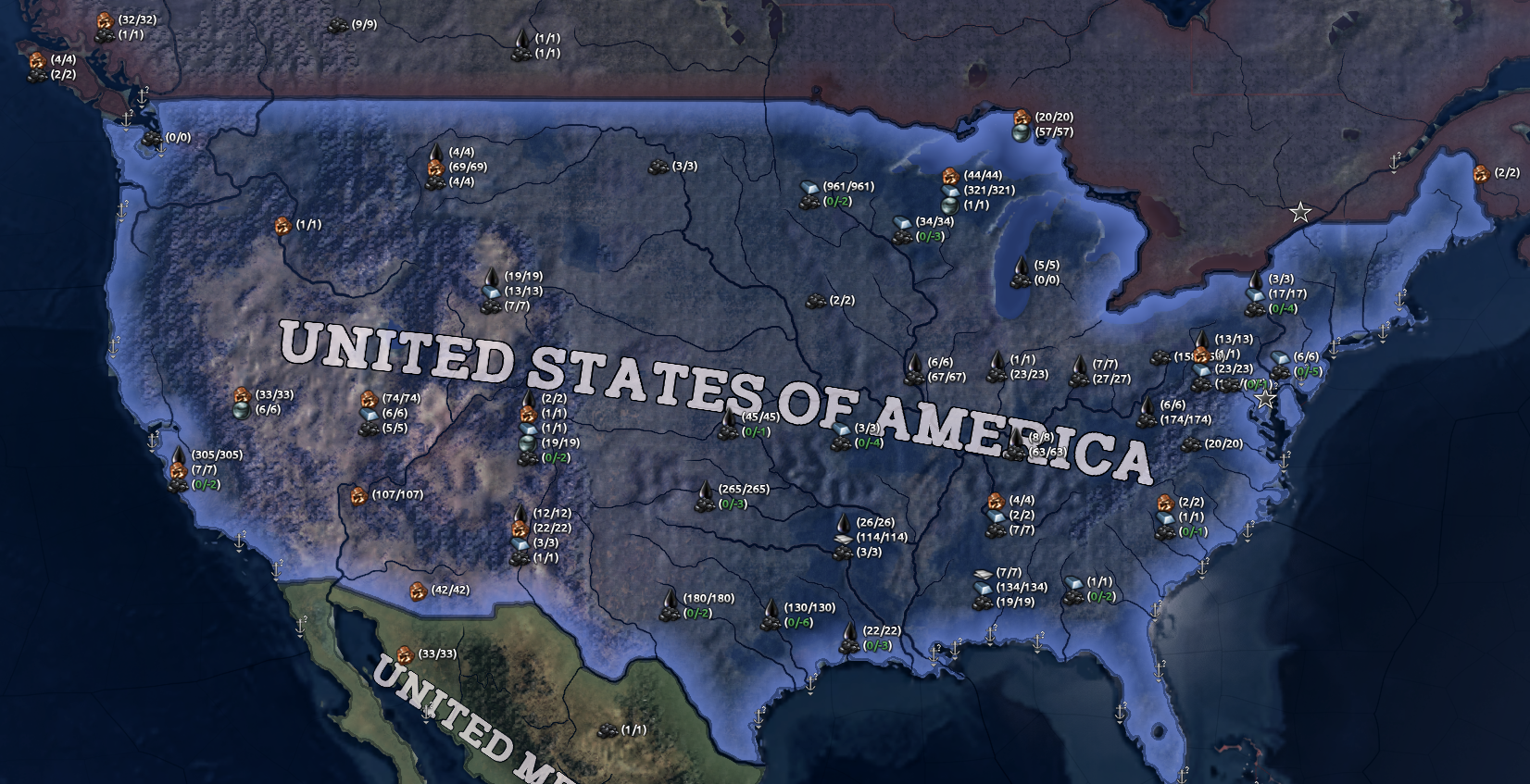
Chilean copper:
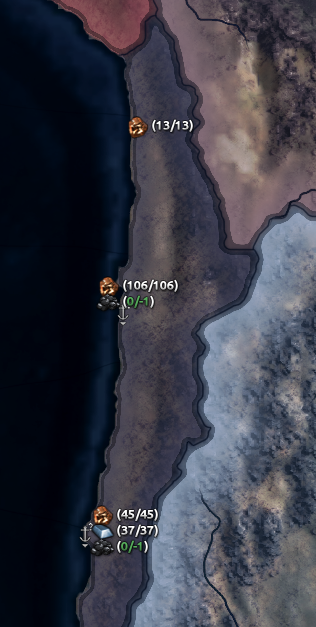
Katanga-Northern Rhodesia copper:
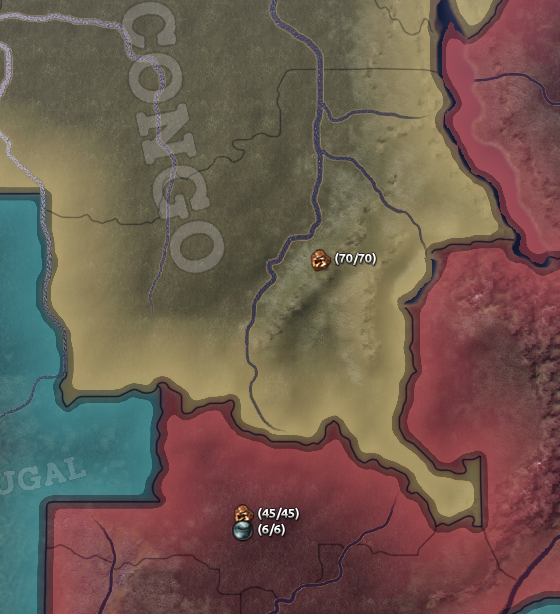
Iron
Similar to bauxite, iron serves as a replacement for steel. Not much was changed as far as how iron is used in production, but distribution was changed to represent mined iron rather than produced steel, as iron needs to undergo steelmaking processes to become steel. This is represented by coal being needed in all equipment production that requires iron, which is covered a bit more later.
For INPROV, iron production in 1932 is largely sufficient for current demands, but as war nears imports will become necessary. Strong relations with Sweden provide INPROV with a respectable supply of high quality iron. Also important will be war targets, particularly that of France and the Lorraine iron ore fields. Germany historically dominated European iron production due to the acquisition of Alsace-Lorraine, but its reversion to France has given the French a monopoly on the continent. The French are rivaled on the global stage only by the United States.
French Lorraine and Luxembourger iron:
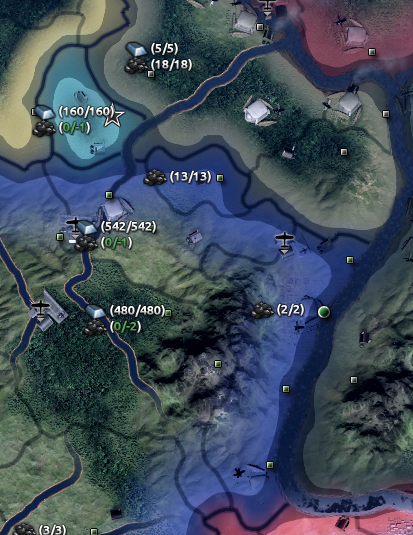
Swedish iron:
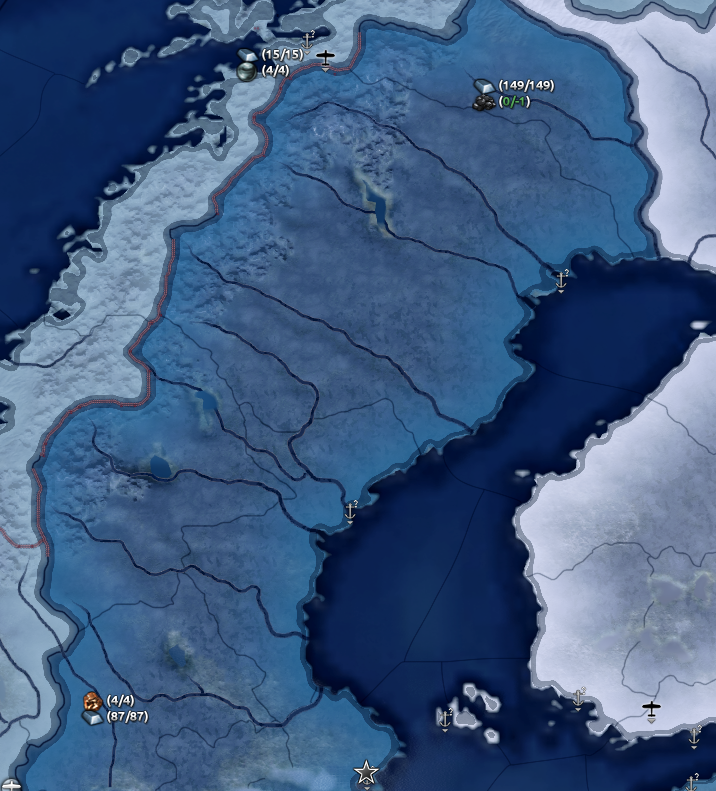
American “iron range”:

Rare Metals
Rare metals serve as a replacement for chromium and tungsten. Tungsten as an independent resource in vanilla never really made much sense given its war usage was essentially the same as chromium, being part of a wider array of metals used in producing stainless steel, armour plates and high quality tools. As a result rare metals not only encompases chromium and tungsten, but also molybdenum, vanadium and nickel.
The wider scope of rare metals is a large reason for why no singular power dominates the resource. INPROV mainly sources it's rare metals from the Soviet Union, with additional demand being met by the friendly Kuomintang government in Wuhan. The modernization of the war industry will only continue to increase the demand, with immediate targets for INPROV being the rare metals (chromium) in Turkey and Serbia.
For the anti-communist bloc, both France and Britain have access to significant amounts of rare metals. The British colonies and dominions provide Britain with a plurality of rare metals, while New Caledonia meets the French demand. Of particular note for Britain is the chromium of Southern Rhodesia, which is currently facing a slump, but will eventually become an invaluable source. On another note, you may notice this as a unique situation (alongside rubber) where the United States does not dominate production.
Chinese rare metals:
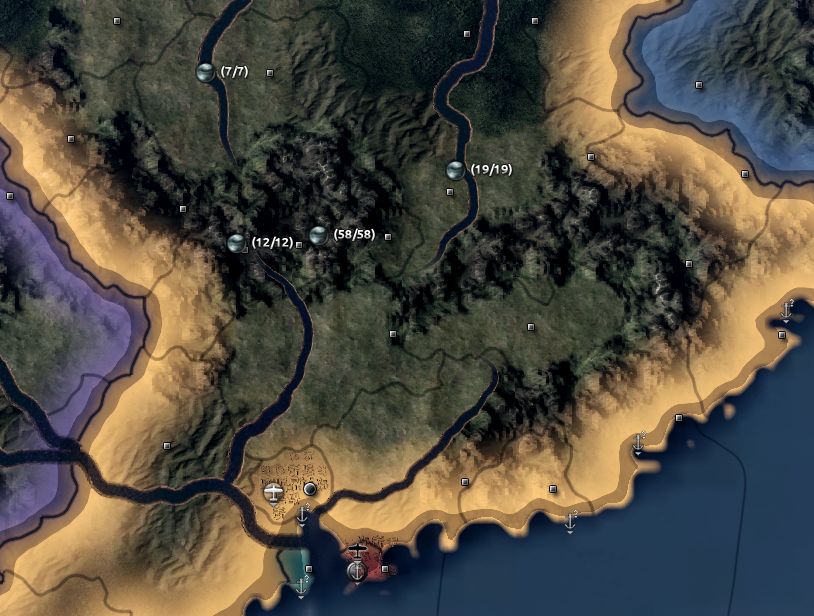
French rare metals:
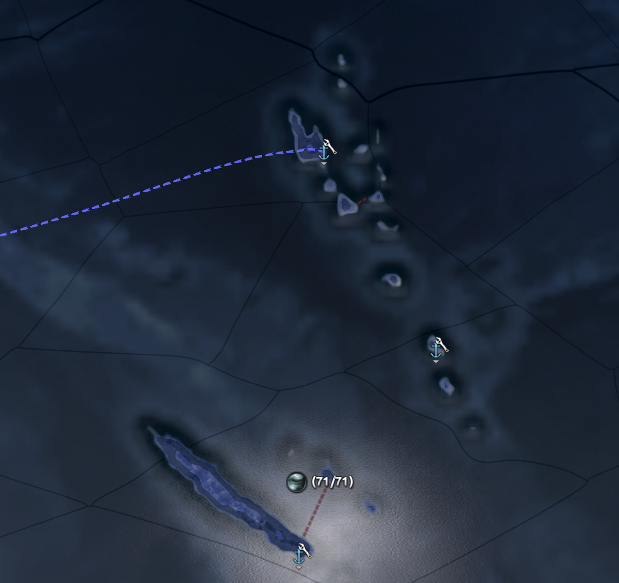
Soviet rare metals:
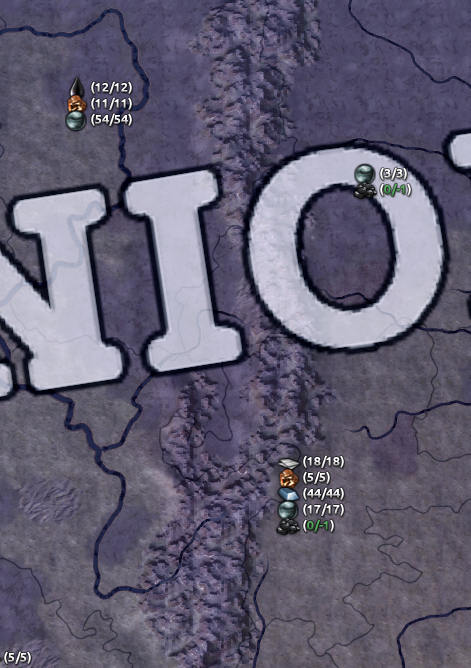
Turkish rare metals:
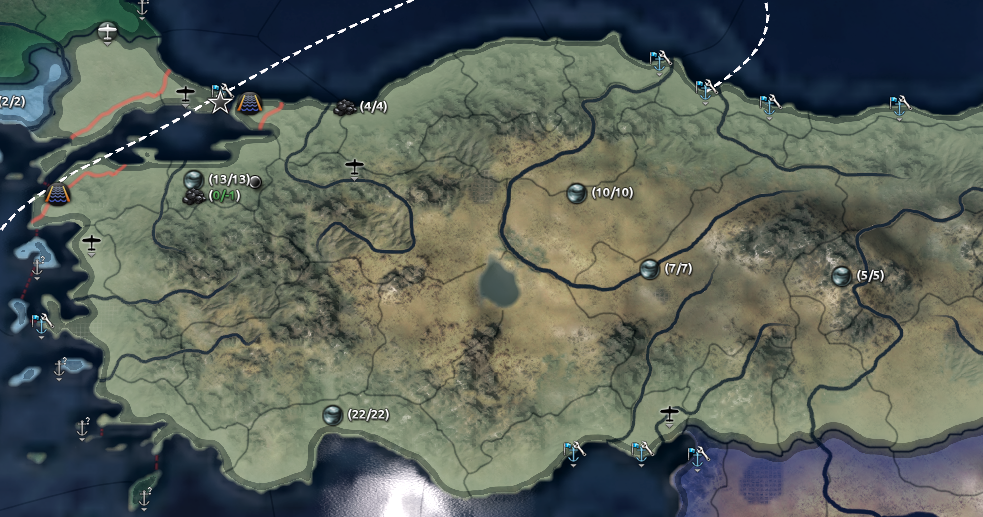
Coal
Coal, like copper, is another brand new resource in Spartakus. Coal was and still is a very important resource, crucially used as a source of electricity and heat. Coal in World War II was the heart of any war industry, and the same can be said for World War I.
Coal is perhaps the most “complex” resource in Spartakus as far as distribution and numbers go. In the research behind this, coal was divided into three types based on their quality: lignite/brown (worst), bituminous/black (decent) and anthracite (best and very rare). Better quality translates to more in-game units of coal relative to production in metric tons. So, for example, with lignite 1,000,000 metric tons translates to one in-game unit, while 750,000 tons of bituminous translates to one in-game unit.
INPROV is in the best position when it comes to coal production, with Germany being the largest producer in Europe in spite of the loss of the Rhineland and the Saarland. This is combined with a healthy coal industry in the USSR. German coal production is fairly evenly split between lignite and bituminous, with bituminous coal being based in the Ruhr and Silesia and lignite being based in Lusatia and Central Germany. In the USSR, most coal comes from the Donbass region, with other significant deposits in Eastern Siberia.
German coal:
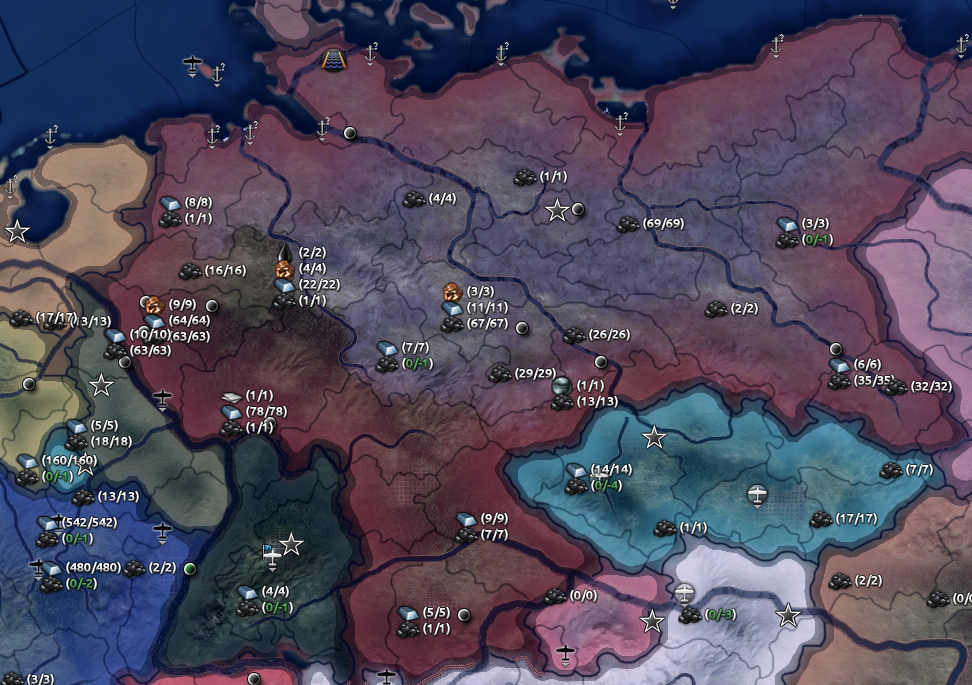
Soviet coal:

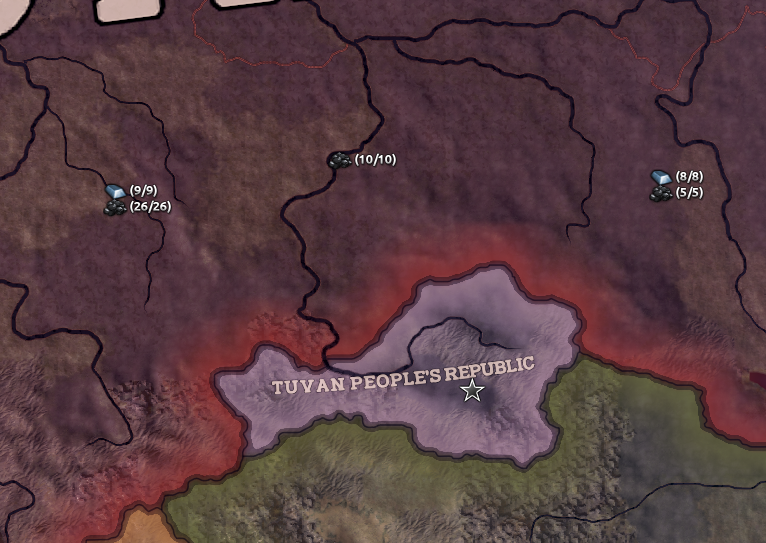
For the anti-communist bloc, Britain is in the strongest position, with significant coal production composed primarily of bituminous coal alongside a small amount of anthracite. Production is spread out across Britain, with most coming from Central and Northern England as well as Scotland. Additional coal is available from India. French coal production is fairly low, which aligns with the historical need for France to import coal. Most of the production comes from Northern France, which proved to be a nuisance in World War I when the region was occupied by Germany. Additional coal comes from the area around Lyon, as well as the newly acquired Saarland. France will inevitably need to import coal from Belgium, Britain, America and other nations to sustain its war and civilian industry.
French coal:
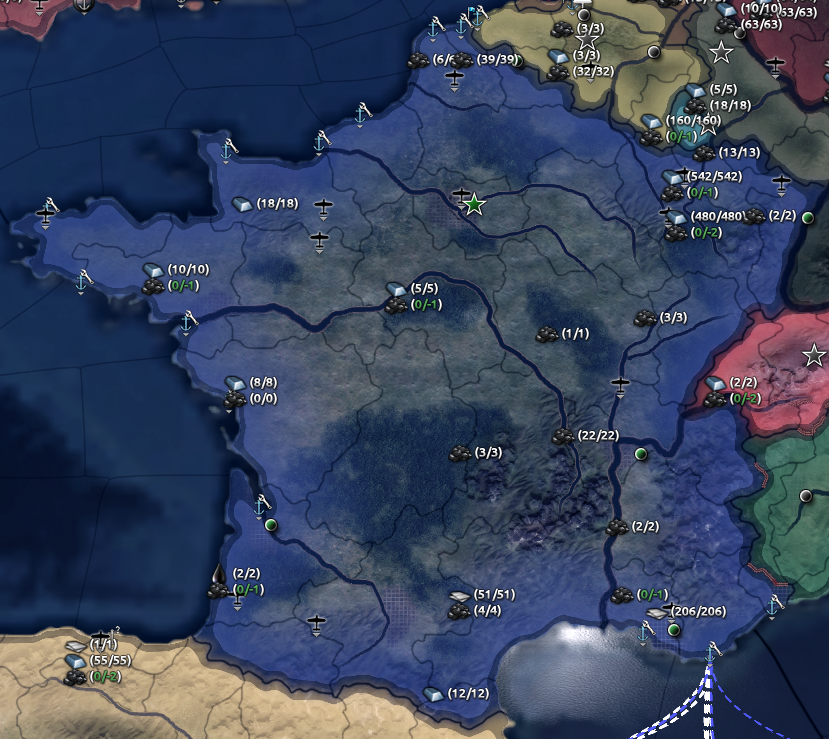
British coal:
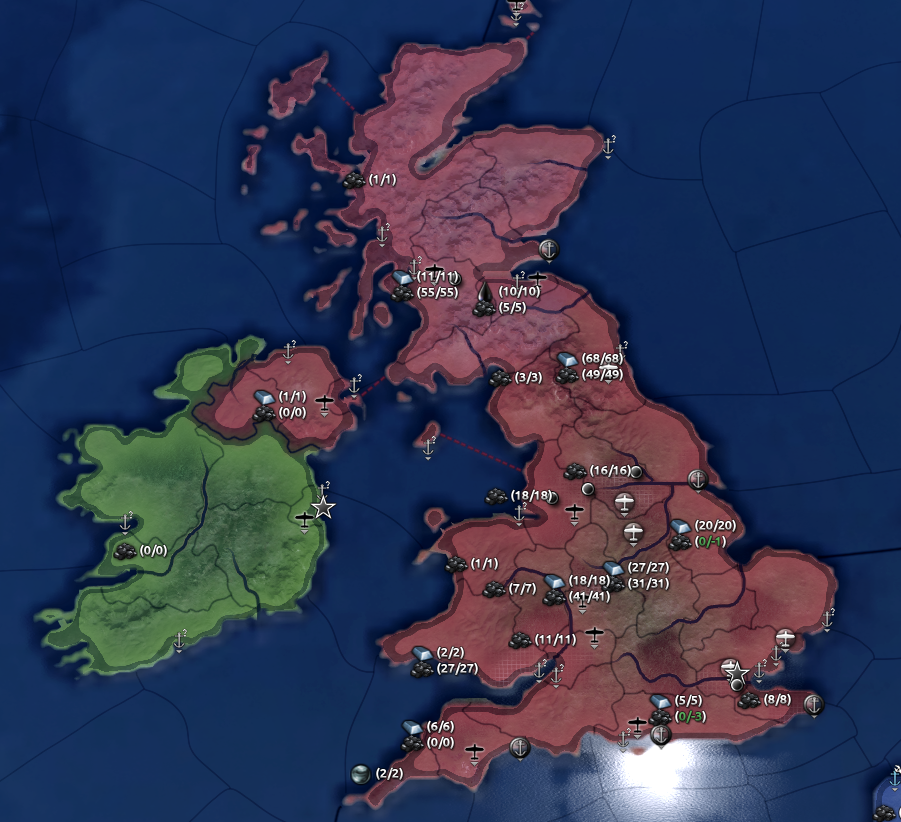
Main American coal region:
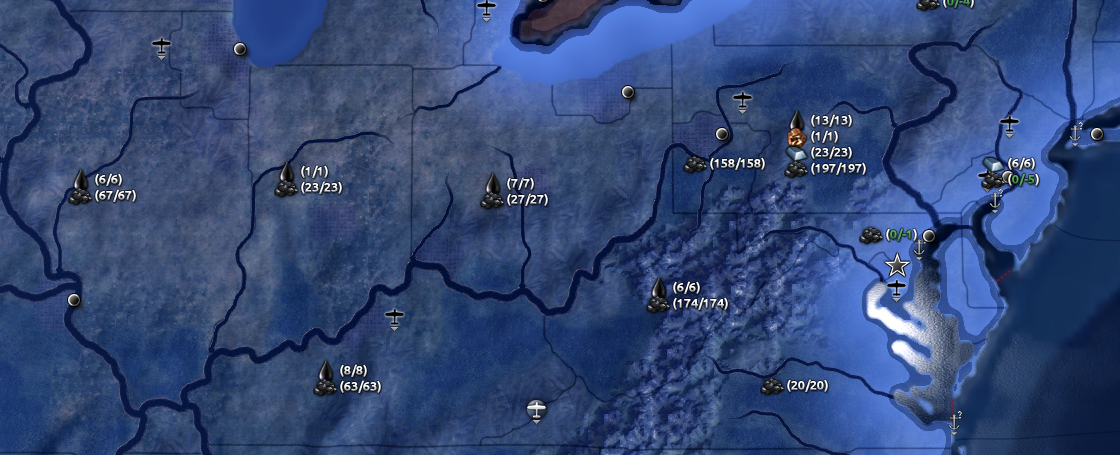
You might ask “what do you mean by civilian industry?”. Of course, coal is not only used in the war industry, but also in the civilian sector. To account for this, all civilian factories cost 1 coal to run:
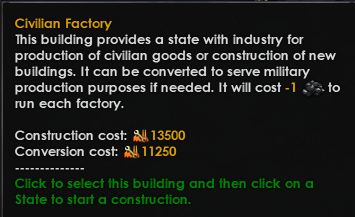
If you have a shortage of coal, this will cause construction speed efficiency to be lowered:
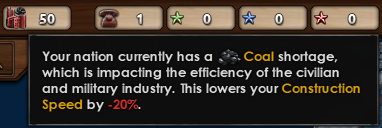
This is not the only instance where coal is used for buildings. Coal is also consumed by Synthetic Resource Factories and Fuel Refineries, which are covered a bit more in the next section.
Building & Production Changes
A number of changes have been made to buildings as part of the rework. There is the previously mentioned change to civilian factories, which require coal.
Additionally, Synthetic Refineries have been replaced with Synthetic Resource Factories. These factories use coal to produce synthetic oil and rubber, which are actually created under very similar processes. These processes can be improved so each factory produces more synthetic resources, but at the cost of more coal.
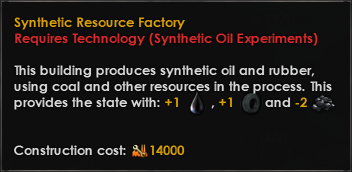
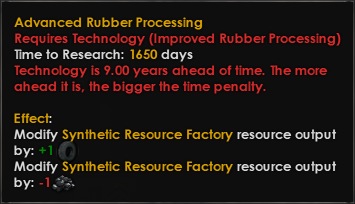
Also changed were Fuel Silos, which have been replaced with Fuel Refineries. These cost coal to run, just like civilian factories. As part of this rework, fuel production has been tweaked to be largely reliant on fuel refineries. Raw oil is not usable as a fuel, and must be refined first, so naturally it makes little sense to be able to produce large amounts of fuel in the absence of refineries. Fuel refineries were, of course, added as starting buildings for countries that historically had them. Fuel Refineries also serve the purpose of the building it replaced by increasing fuel capacity.
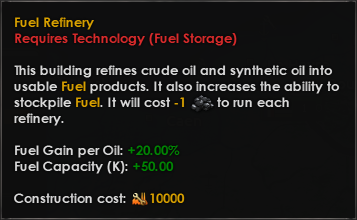
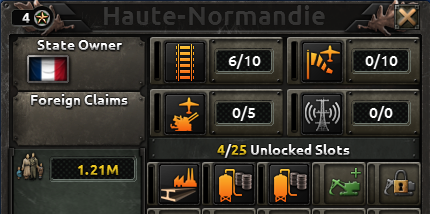
Finally, here’s an example of how the production menu looks with the changed resources:

Conclusion
Thanks for reading! I know this is not perhaps a topic that interests everyone, but we will be looking to get country-based progress reports out in the foreseeable future alongside the traditional “mega teasers”.
If for whatever reason you are interested in what was used a source for these figures, check out the minerals yearbooks.
Remember to join the Discord, as many teasers are exclusively posted there. Feel free to ask questions on there as well. Discord.gg
Also, if you are interested in joining the Dev Team, please remember all you need to do is fill out this form. The more help we get the faster the mod will be released: Goo.gl

Spartakus - Dev Report 17
News 2 commentsDev Report 17: Man the Guns, Chaos in Illyria, Civil War in Italy, a Revolt in India, Floods in China & the Land of the Saudis.

Spartakus - Dev Report 16
NewsDev Report 16: Bulgarian Lore, Economics in Norway & the Estonian Betrayal.

Spartakus - Dev Report 15
NewsDev Report 15: Indian Leaders 2: Mountainous Boogaloo, Baltic Victory Points & Swedish Vikings.
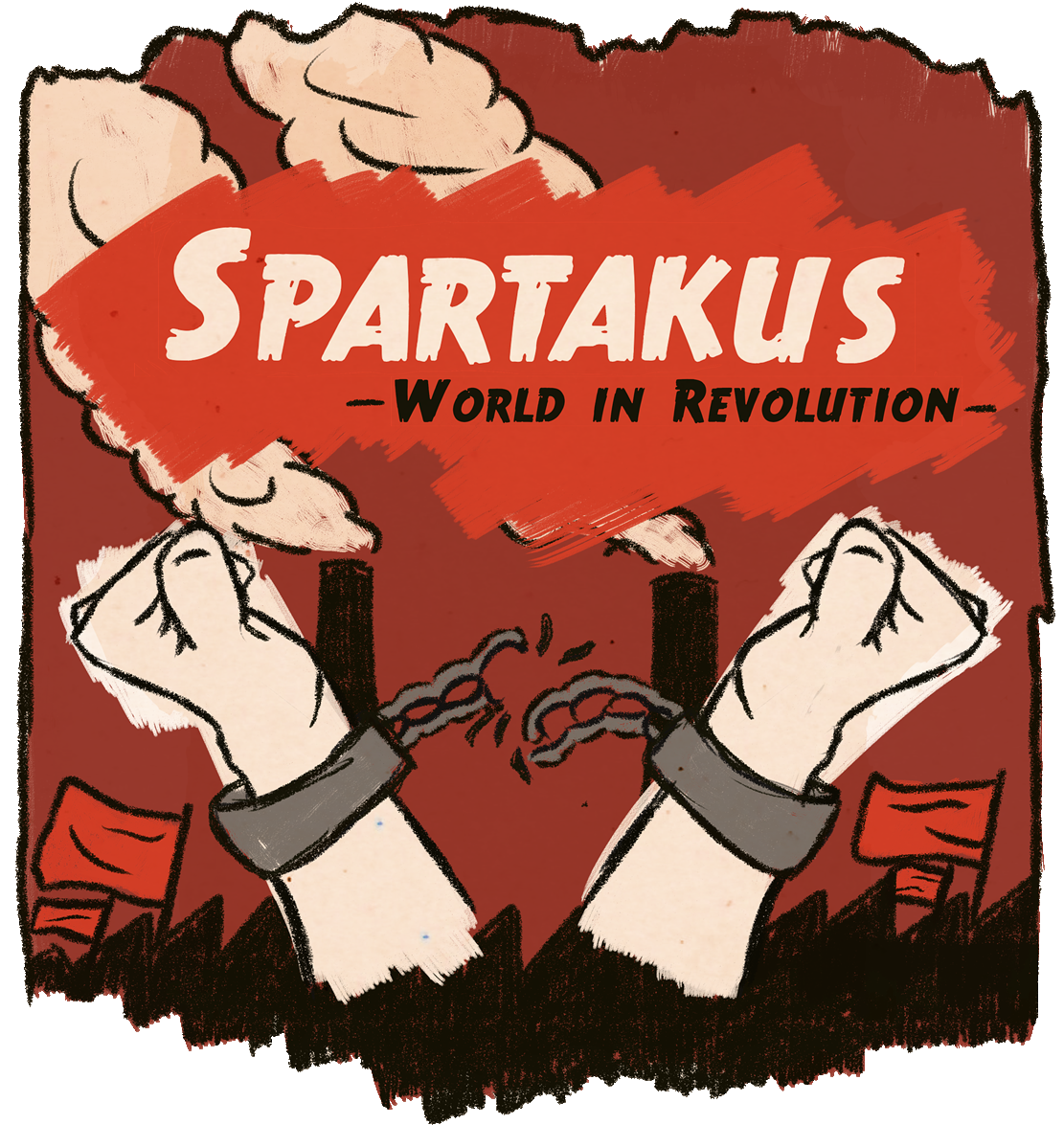






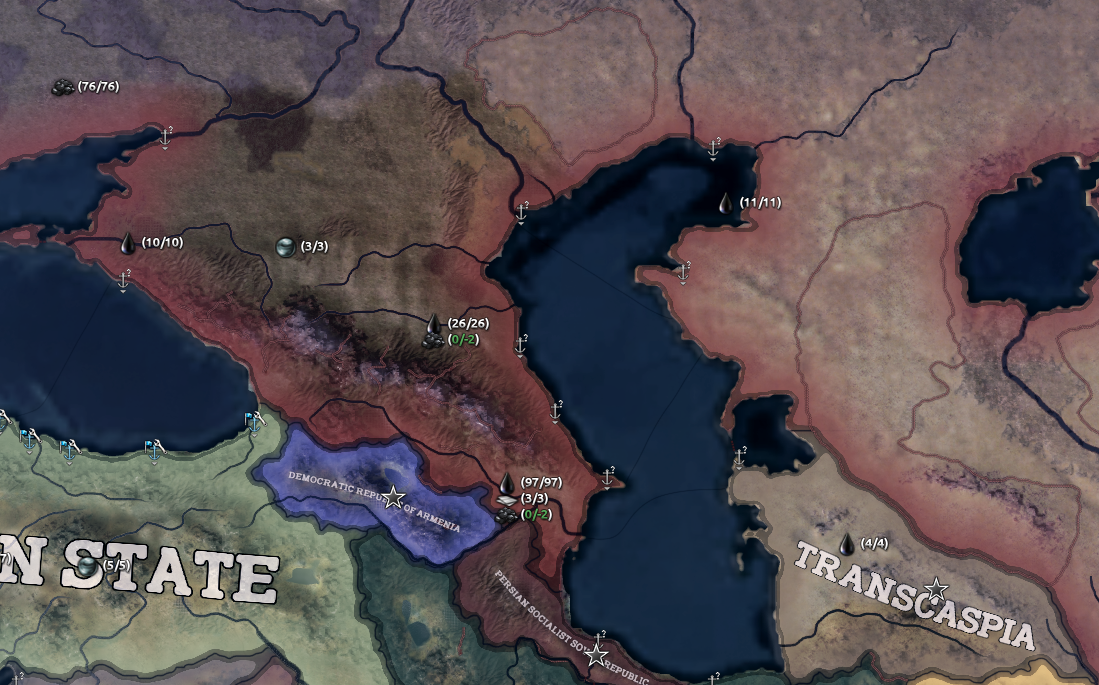
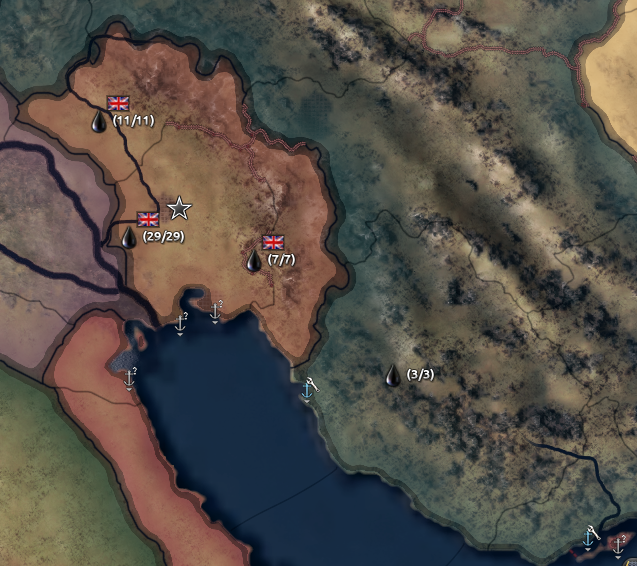
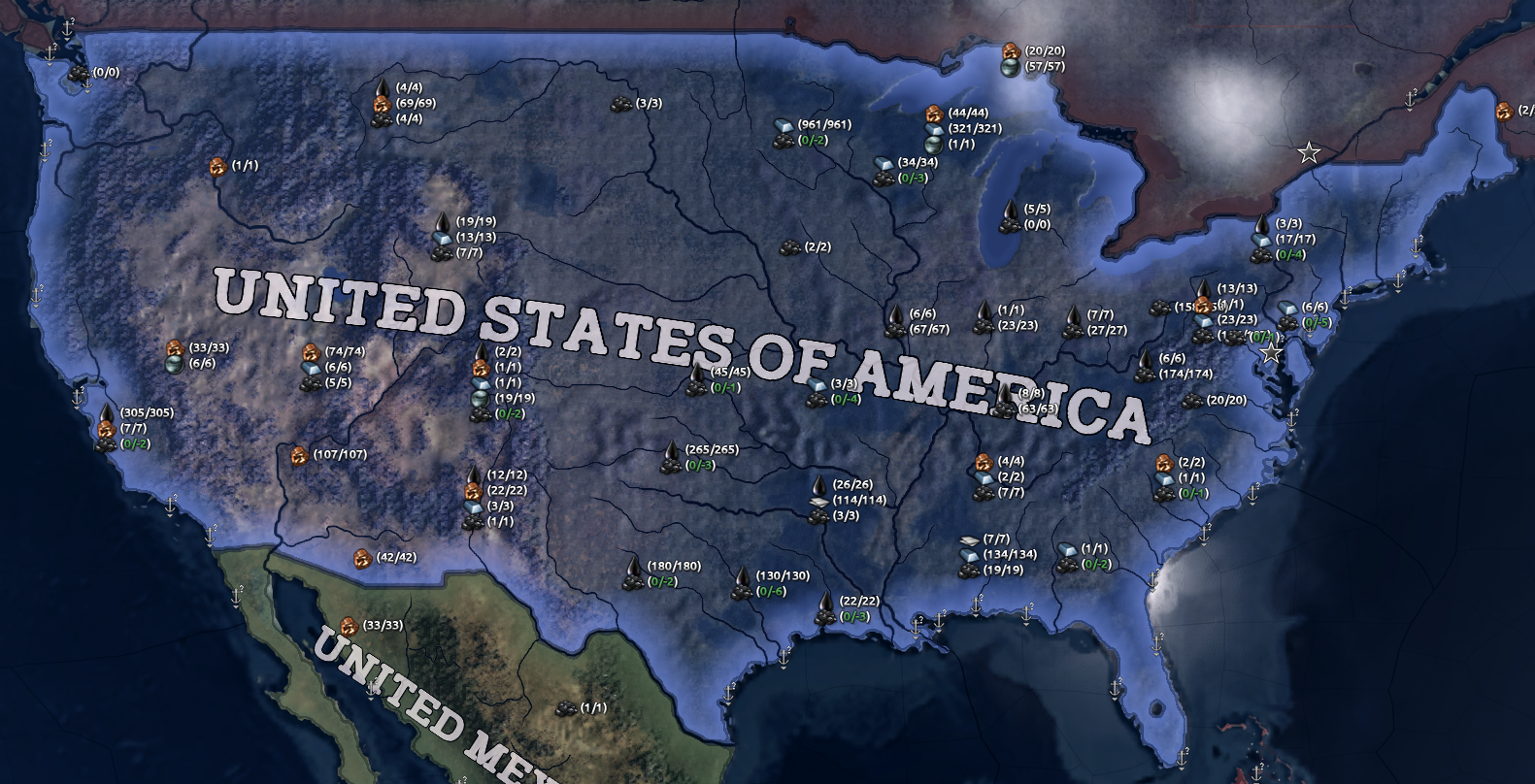









This comment is currently awaiting admin approval, join now to view.
update
Will this mod be posted onto steam?
They said it would
J'attends avec une grande impatience ce qui me semble être un merveilleux mod!
J'espère que vous avancez bien sans problème! En tout cas je vous souhaite bonne chance et bonne continuation!
Bonjour de la France!
Lot of polish on this mod. Just wanted to say good work on it and that I'll keep lurking!
Will this be released on Steam?
Yes.
Very good. Love this mod's progress.
Will it be over in the middle of 2019?
We are aiming for release in mid-late 2019.